- Home
- Patrick Robinson
The Lion of Sabray Page 2
The Lion of Sabray Read online
Page 2
10. Nang (honor). A Pashtun must defend the weak around him.
- 1 -
A TRIBAL WARRIOR IS BORN
When the late Lieutenant General Mikhail Kalashnikov made the final refinements to his universal assault rifle back in the 1960s, he became a patron saint of revolution. In the decades following the new production lines for the AK-47, the sixty-year-old Mikhail armed just about every disgruntled terror group on the planet.
From half-educated jihadists and the armies of rogue states to crazed Far Eastern dictators and jack-booted communist secret police. The “Kalash,” as the Russians call it, has armed millions of malcontents, from Red China to the Congo, from North Korea to Baghdad, from Beirut to Tehran and back.
Of course, it also armed the Red Army, and it was the mainstay of the army of Afghani Patriots, the mujahideen, whose country was invaded by the Soviet Union in 1979.
In the past, everyone was drawn to the AK’s gas-driven rotating bolt rifle, the cyclic six-hundred-rounds-per-minute firing rate, the four-hundred-meter range, and, of course, its famous reliability, durability, and availability. The old Soviets would sell that weapon to anyone.
The rifle was heavy. With its sturdy wooden stock, it weighed almost ten pounds with the magazine loaded, but it had a back-kick like an angry mule, which often resulted in bullets being sprayed around all over the place by would-be warriors with weak wrists—men who could scarcely hit a barn door at point-blank range.
But complaints were few. And even the genuine gripe of the home guerilla army in Afghanistan, fighting the invading Russians in the deep valleys of the Hindu Kush, quickly accepted that Mikhail’s masterpiece had a flaw: it was utterly unsuitable as the weapon of choice for the youngest mujahideen recruits, who were often around eight years old. The fact was, it was too heavy, too much of a handful, too much gun.
The mujahideen treasure their boy soldiers, the armies of the future. And local commanders expected everyone to be battle-trained by the time he reached the age of twelve. And, of course, the first great skill they needed to learn was to shoot straight.
With no birth certificates, this was all slightly hit-or-miss when assessing the kids for active infantry duty against the Red Army.
When he was eight, Gulab was taken away from his village to fight the Russians. He was small for his age and could hardly lift the Kalashnikov.
He struggled to raise it while peering down the adjustable iron sight. He pulled the trigger fast, just in case he dropped it and killed one of his own side. That rifle slammed against his shoulder and knocked him flat on his back.
The 7.62-millimeter bullet could have gone anywhere, and before he climbed back to his feet, one of the junior commanders gave him a sharp slap across the face, presumably for military incompetence. It was some years before they ordered him once more to carry the standard mujahideen assault rifle.
This was not, however, a problem to be solved by sending him home to his village, back to school, or to his studies of the Koran. Gulab was here on the battlefield, the younger brother of one of the mujahideens’ finest commanders, and if he was too small for the Kalash, they’d find him something else to fire on the enemy. Age was not an issue.
To a Westerner, it does seem cruel to hear of children being recruited for a ferocious and historic tribal army pledged to fight to the death for its hilly homeland. But fighting is just a way of life in their culture, and Gulab will confirm endlessly that it was not strange for him, nor for his family. And at the time, they were at war with invaders. There was no other life. Gulab comes from a Pashtun tribe. Mountain men and women. His tiny village, high in the Himalayas, has always been under attack, from gangsters, smugglers, thieves, warlords, and, more recently, Al Qaeda, the Taliban sect who covet the seclusion, and other rival factions who covet the lush, timbered slopes and relatively prosperous way of living.
Gulab speaks thoughtfully about his own birthplace. “Sabray is just a little village,” he says. “And I suppose a Westerner might consider it a primitive place. There are only two houses which have an iron stove in which to bake our bread, and this we share every day. Our electricity supply is limited to one generator, and water comes from a mountain river.
“Sabray is built on a steep gradient, well over three thousand feet above sea level in the Hindu Kush range, with peaks towering many thousands of feet above us all. Sounds echo across the valleys, bouncing off the walls of the mountains.”
The village stands slightly north of the world’s 33rd parallel, in Central Asia, in a time zone nine and a half hours ahead of the East Coast of the United States.
It’s close to the Pakistan border, and 135 miles from the Afghan capital of Kabul, which lies across high mountains and seems like half a world away if you’re walking, as most Afghanis do.
For centuries, the people of Sabray have fought like lions for what they owned. There was a family Kalashnikov always ready in the main room of every house, magazine clipped and loaded. Everyone carries a tribal knife. Thieves are likely to meet a quick end.
If the men are away working, the women are equally dangerous. The chances of any thief getting out of any house with his life intact are remote. The Pashtuns traditionally shoot to kill and, if necessary, deliver the precision slash to the throat from an Afghan tribal knife.
“Every house and family in the village is similar,” says Gulab. “The citizens of Sabray are renowned throughout Kunar Province as fighters, fearless soldiers, skilled in the art of war. Men from Sabray have long been considered the very heart of the mountain armies. It is often said that a hundred thirty warriors from Sabray will seem like ten thousand to any enemy.”
US Special Forces will confirm how these mountain men move swiftly, silently, and ruthlessly. They are experts at moving over every inch of those rocky, barely charted escarpments. They have never cared for outright confrontation with the fire and steel of any occupying army, like those of Great Britain (nineteenth century), the Soviet Union (1980 to 1989), or the United States (now). Their specialty is ambush. And no one is too young to learn that.
Which is, more or less, why young Gulab was marched off to war at such an early age and why such high expectations were leveled upon him.
He still recalls the moment when he was flung to the ground by the kick-back of that AK-47. “The incident ran close to a family disgrace,” he said, frowning at the memory. “I was not aware of it at the time, but I was aware of the immense reputation of my brother, Commander Nazer Gul, a very, very dangerous man.
“Eighteen times he’d been wounded in battle. And eighteen times, he fought back to resume his command. Gul is a trained killer, once jailed for twenty years for ending the life of a tribal enemy. In fact, they let him out after only five years, on the simple condition that he immediately raise a mujahideen army of Sabray fighters—men everyone knew would follow him into hell.”
His mission was to train them and join in the mujahideens’ fight against the occupying Russians. By the time Gulab arrived on those treacherous high peaks, Gul was one of the senior officers.
“I’m not sure he ever knew his kid brother had been flattened by my own rifle,” says Gulab. “But I do know an order came down from very high up that I was to be inducted immediately into guerilla warfare using a more manageable weapon.”
For this the Afghanis chose the heavy, lethal Soviet machine gun the DShK-38 (the Russians call it the dushka), with its huge 12.7-millimeter cartridge, two-thousand-meter range, fifty-round ammunition belt, armor-plated shield, and heavy-wheeled mounting. The gun alone weighed seventy-five pounds and, once, handled erratically by the Irish Republican Army, knocked a six-ton British army Westland Lynx helicopter clean out of the sky and dumped it on the shores of the Cashel Lough in County Armagh.
The eight-year-old Gulab could not believe the size of it when they led him to the machine gun station. The good news was that he did not have to lift it. The bad news was that he could not reach it to look through the crosshairs.
>
The DShK-38 was in a fixed firing position, its three-prong stand jammed into the ground, and they had to get Gulab up there somehow. Huge, flat stones were collected to build a platform for him to stand on and start blasting away with one of the most deadly large-caliber weapons in the world. It shook like hell, but it did not kick back like the Kalash. And Gulab remembers enjoying himself, banging away at distant rocks and trees. His teachers were right: it was a lot easier to handle than a Russian infantry assault rifle.
What led to Gulab being attached to that machine gun were the momentous events of December 25, 1979, when the Red Army marched into Afghanistan from the north and attempted to subjugate the people to the unwanted purposes of the Soviet Union, under the leadership of President Leonid Brezhnev.
Gulab was about six years old at the time and not aware of the significance of that invasion. In fact, it took some time for the nation to understand precisely what had happened and what it might mean. But there was a very definite sense of consternation, and there were meetings of the village elders and a call to arms was issued by the mujahideen.
It was the first time Gulab ever experienced mass tension in the village. He knew that his brother Haji Nazer Gul was “away” but was never told he was in jail for murder. And he does recall his return, liberated by the authorities in order to lead the men of Sabray into battle. He scarcely understood that the mujahideen would fight, and keep fighting, until the Russians marched right back out of Afghanistan and stayed out.
At the age of six, Gulab might not have been totally focused, but he understood the word enemy—and everyone knew there was an enemy close by. They did not know exactly what he wanted, or why he was there, but they did know he worshipped a different God and therefore was an infidel. Abstractly, the villagers knew that the tribesmen would, in time, defeat the Russians and drive them away. Equally vaguely, every young man in the community understood that he would be required to fight in the not-too-distant future.
The daily prayers in the village mosque contained a heightened awareness of the battles that loomed ahead, and they recited the eternal cry of the Islamic creed: “La Ilaha ill Allah Muhammadur-Rasul Allah”: “There is no god but Allah. Muhammad is the messenger of Allah.”
Other new but ancient words also echoed throughout the village, and that translation read: “Oh, God. Please make us successful in our fight. Please help us to kill the infidel. May God bless us.” The learned men drilled it into those very young minds.
The words were simple, and they were part of the prayers offered five times a day, beginning at dawn and right through to sundown. And every single time, when the gathering turned to face Mecca, in Saudi Arabia, the village elders and the learned men prayed with the Imam; prayed for a just victory over the intruders from the North.
This was the mantra for Islamic life, even for those so young. The senior men frequently went to war and frequently came back. But not always. Gulab understood swiftly that friends had lost fathers and brothers in the Russian conflict. They all knew the dangers and understood the risks. They knew that the children, too, would one day follow them out onto the steep, dusty slopes of guerilla warfare, where they would kill to survive, as their ancestors had always done.
For the people of Sabray, the tradition of “blooding” boy soldiers to join the line of battle in the Hindu Kush was as timeless as life itself. It’s entirely foreign to Western culture. But Gulab found nothing strange in it. The right to fight and kill an invading enemy is instilled in Pashtun culture.
Every young boy was taught the last great triumph of the tribal warriors of Afghanistan: how the bearded Islamists had destroyed the British army in the infamous retreat from Kabul in January 1842. Everyone was taught how the English major general Sir William Elphinstone, attempting an orderly retreat out of Afghanistan, was wiped out in the mountain passes. Out of sixteen thousand men, only one made it home to the garrison in India. The last stand of the British was made in the Gandamak Pass along the road from Kabul, when those renowned veterans of Waterloo, the Forty-Fourth Regiment of Foot (the Fighting Fours of Essex), were annihilated by Afghan warriors, fighting from the heights.
The Afghanis were the supreme exponents of ambush combat. One hundred fifty years later, Britain’s Spectator magazine described that combat as an “almost perfect catastrophe.” As it was then, so it will always be: the ancient Afghan promise of “You try to conquer us, in the end you die.”
That British retreat is known in the Hindu Kush as the Massacre of Elphinstone’s Army. And it should be said that the Forty-Fourth Regiment fought back with great gallantry to the last man, refusing to surrender despite British losses of 4,500 troops and almost 12,000 civilian workers, family members, and camp followers.
All nations are formed by their history and their heroes of the past. And the Pashtuns were most certainly created by theirs. From their earliest years, the village teaching was simple: We may be attacked, we may even be conquered, but we will always fight back, and we will never give up. . . . We battle, if necessary, until there is no one left. If we run out of ammunition, we will use our rifles as clubs, and if we run out of rifles, we will resort to our tribal knives, and night after night we will cut the throats of our enemies, until they leave our territory.
Gulab became very confident with the Russian dushka, and in the coming eight years of warfare, he was recognized quickly as a master gunner, firing the mounted heavy machine gun with precision. The very young learn very easily. In Afghanistan, that’s especially important.
Back in the village, they heard the outbreak of the Russian war from the sustained gunfire out of a deep valley, about eleven miles away across the mountains.
The sounds of that first battle had a pattern: long, drawn-out gun bursts, short and sharp at first; and then louder, more serious, as the mujahideen commanders switched to the heavy machine guns, firing on the Russians from the high walls of the valley. In the end, there would be, possibly, four massive explosions, like detonating a mountainside, and then a strong, shuddering, lingering aftershock. Then silence.
Long before his eighth birthday, Gulab knew what those sounds represented, though it took him several weeks as a junior machine gunner to understand the most important part of mujahideen strategy. This occurred in the hours of profound silence that preceded an Afghan opening attack.
These were the hours when the mujahideen commanders ordered battle lines into position. The ambush site had been selected, always above a valley being approached by a large Russian convoy. The mountain warriors moved swiftly and quietly up to the heights, crossing their native ground, utilizing the “dead spots” behind rocks and trees, from where they could not be seen from the valley below.
The first time Gulab saw them, it was like watching shadows: these brave, fearless tribesmen moving across the shifting shale escarpments, leaving scarcely even a footprint and certainly not causing any sand or rock to slip down the steep slopes. He once told me, somewhat sardonically, “Anyone can do it like us—after about two thousand years of practice!”
No enemy of Afghanistan has training like the natives. Certainly not the Russians, nor the Brits nor the Americans. Those mountains are the mujahideen training grounds; all their lives are spent moving across them, making no sounds, because of the endless dangers. Gulab remembers his first battle. It took many hours to prepare firing positions, and then they waited, high above the valley floor, with no one making a sound.
“Mostly,” he told me, “I remember my brother Haji Nazer Gul. Sometimes he was the only man moving, making signals, checking ammunition belts, adjusting aim-and-fire placements, always with his big Russian rifle slung over his shoulder.
“When, at last, he was finished, we could see him above us, in conference with the senior commanders, while our lookouts—positioned high on the rocks—stared down into the valley, searching for the dust cloud, which swirled inevitably above the Russian convoy.
“As soon as they came rumbling into the valley,
with no escape, neither to the left nor right, our orders were simple. Upon the command, we would open fire on the armored vehicle drivers and commanders—those we could see clearly. They could not, of course, see us, since we were ducked down behind huge boulders a long way above them.”
Mujahideen strategy was to level sustained fire down on the enemy, concentrating on the rearguard, and thus driving the leaders forward to the end of the valley. And there the Afghanis finished them with their biggest bombs, planted in booby-trap order, sometimes in the valley floor. Often there were few survivors.
Once, in a summer ambush, Gulab was in a strange quietness from the shattered convoy. And then, as the commanders walked down to finish off any still-breathing Russians, he recalls a huge black cloud rising from the bodies, way up into the sky, blotting out the sun. This was a flock of crows—looked like millions and millions of them—feeding off the corpses. It was absolutely horrible.
And for the first time in his young life, he thought war was a really terrible business. “Up till then,” he said, “I thought it had something to do with heroism.”
The Russians considered those ruthless ambushes barbaric, but the mountain men don’t really go much for subtlety. They go for death, especially to the infidel. And if the Russians did not like it, well, perhaps they should have thought about that before they invaded the ancient Islamic homeland of the Pashtun people.
It worked against the earlier British invaders and it would work again against the Russians. The mujahideen were perfectly willing to face death. And they could melt into those mountains, invisible in an instant. Pursuit was impossible.
The war had been going on for about a year when Gulab was first called to the front line. The timeline began on the Christians’ holy day of December 25, when the Russians staged a massive military airlift into Kabul. It involved nearly three hundred transport aircraft and more than twenty-five thousand men, and after a savage battle in the city, they took the Tajbeg Palace. Kabul fell.

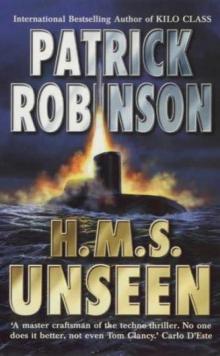 H.M.S. Unseen am-3
H.M.S. Unseen am-3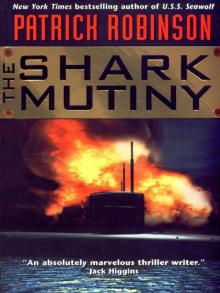 The Shark Mutiny (2001)
The Shark Mutiny (2001)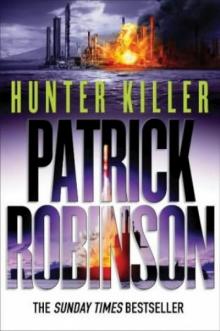 Hunter Killer am-8
Hunter Killer am-8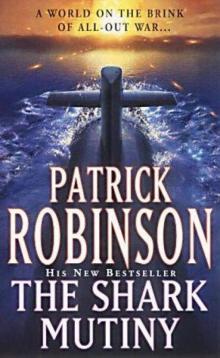 The Shark Mutiny am-5
The Shark Mutiny am-5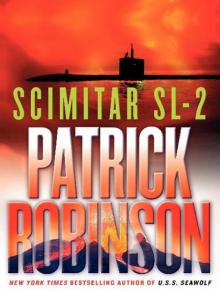 Scimitar SL-2
Scimitar SL-2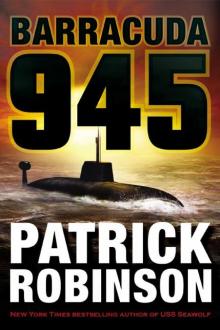 Barracuda 945 am-6
Barracuda 945 am-6 Hunter Killer
Hunter Killer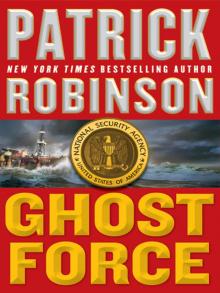 Ghost Force
Ghost Force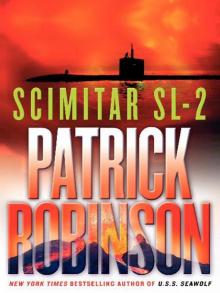 Scimitar SL-2 (2004)
Scimitar SL-2 (2004) Kilo Class am-2
Kilo Class am-2 The Lion of Sabray
The Lion of Sabray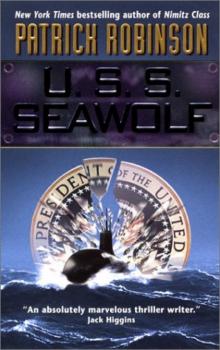 U.S.S. Seawolf am-4
U.S.S. Seawolf am-4 Ghost Force am-9
Ghost Force am-9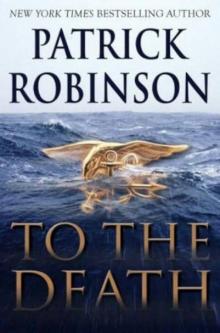 To the Death am-10
To the Death am-10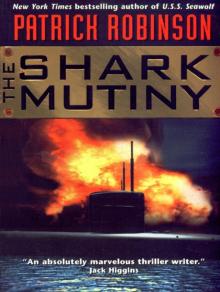 The Shark Mutiny
The Shark Mutiny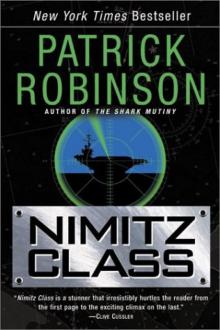 Nimitz Class am-1
Nimitz Class am-1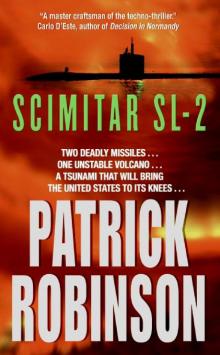 Scimitar SL-2 am-7
Scimitar SL-2 am-7 Barracuda 945
Barracuda 945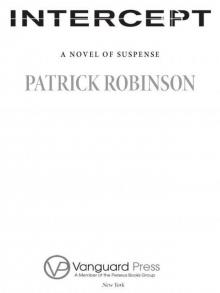 Intercept
Intercept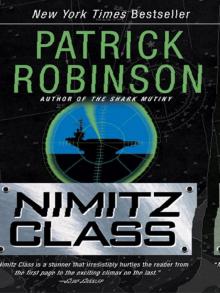 Nimitz Class (1997)
Nimitz Class (1997) Kilo Class
Kilo Class Kilo Class (1998)
Kilo Class (1998) Diamondhead
Diamondhead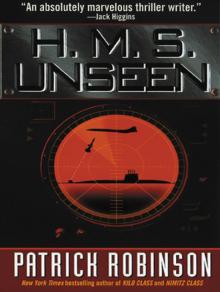 H.M.S. Unseen
H.M.S. Unseen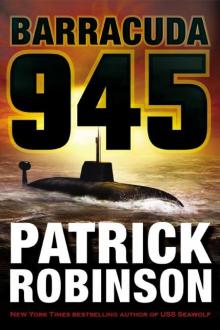 Barracuda 945 (2003)
Barracuda 945 (2003)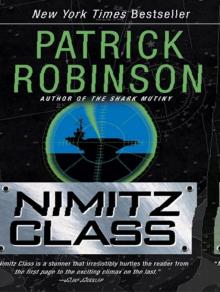 Nimitz Class
Nimitz Class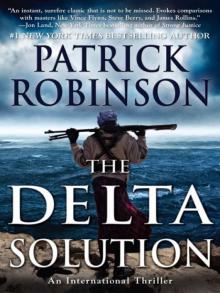 The Delta Solution
The Delta Solution U.S.S. Seawolf
U.S.S. Seawolf